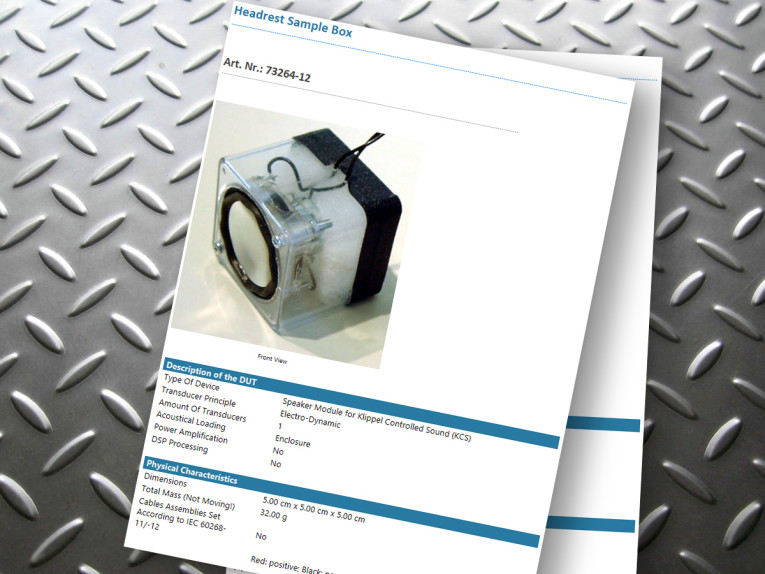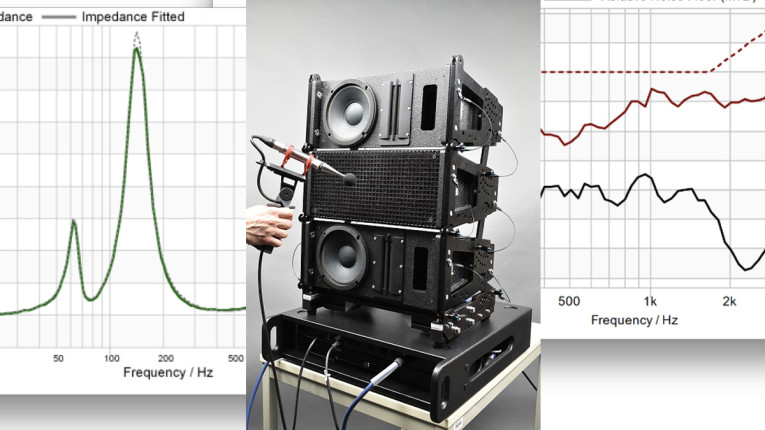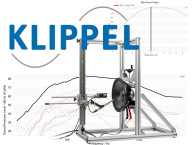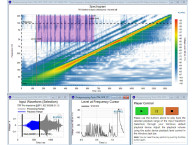
The Summer 2022 Klippel Software Update features the new Documentation module (DOC) for any dB-Lab operation (R&D or QC). The primary goal is documenting measurements in conformity with IEC 60286 standards, in order to simplify the process. As Klippel explains, users just need to fill out the directly available parameters and properties supplied by the manufacturers. Each manufacturer can customize the documentation and select which properties are important for a particular measurement. Storing such configurations as operation templates simplifies the most often neglected, but valuable documentation process.
This means that the description of the device under test and test conditions are displayed, besides actual measurement data, facilitating and enriching communication with suppliers and customers. Instructions and guidelines can also be stored and displayed, making the operator’s work much easier. For repeated processes, datasheets or any other supplementary documents or pictures can be stored in the measurement database together with test results. The DOC module is free of charge and available without license.
Another welcome and important update to the Klippel Analyzer System is the addition of TEDS (Transducer Electronic Data Sheet), the standard that allows users to obtain calibration test and measurement data. TEDS works as an electronic datasheet (defined in IEEE 1451) that contains the manufacturers sensor sensitivity and metadata information. TEDS has been made available for any Klipple KA3 system that has QC-Card(s) installed. Now, any data stored in TEDS compatible microphones can be converted easily into Klippel sensor files. This information can be used with any input, even those which do not support TEDS, such as the Klippel Analyzer (KA3) Laser card, Distortion Analyzer (DA2) and Production Analyzer (PA) hardware, as well as 3rd party audio interfaces or soundcards.

For any QC test using the QC card, the microphones connected to the Klippel Analyzer System are checked at login and the TEDS data is used for measurement whereas unknown sensors are detected and rejected. In this way, full traceability is provided, proper calibration is ensured, and measurement problems due to non-confirmed sensors are avoided.
For all test scenarios where the Klippel Analyzer Hardware is not required or cannot be applied, Klippel created the QC Stand-alone Software, which was also now updated. Used together with the External Synchronization (SYN) add-on, the software is highly suitable for any closed or open loop test scenarios using 3rd party hardware (e.g., audio interfaces) or wave-file-based analysis. It only requires a PC, laptop or tablet running Windows and a Klippel USB license dongle.
In addition to output-based audio testing according to IEC 60268-21, the updated QC Stand-alone software also supports all tasks and features of the QC software that are based on voltage and current measurements, such as Impedance (IMP) for T/S parameter testing and Motor + Suspension Check (MSC) for patented nonlinear parameter testing (e.g., voice coil offset). This allows creating powerful and yet price-efficient test setups using smart digital amplifiers with built-in voltage and current sensing, such as the Powersoft Mezzo series, which are capable of streaming sensor signals via Dante network interface for professional quality control in cost-sensitive applications.

QC 7.3 software now supports the calibration of such devices, with sensor files available for selected amplifiers. The new Tech-Note TN17, "Setting up Dante & Powersoft Mezzo for QC Stand-alone Software" explains how to use those Powersoft amplifiers. The updated QC 7.3 software supports 3rd party streaming V/I amplifiers for any impedance-based measurement task, such as Impedance Task (IMP), Motor and Suspension Check (MSC), Balanced Armature Check (BAC), Multitone Distortion (MTD) and others.
Application Note AN 79b "Efficient, Mobile Quality Assurance of PA Speakers" illustrates the use of those amplifiers and describes a low-effort solution for reliable incoming quality checks of professional audio equipment. All of the hardware can be stored in a compact 2U 19" rack.

Finally, the updated Klippel QC software now provides channel aggregation for multiple microphone measurements. A typical use case for aggregating data is testing microphone arrays, and measuring spatially averaged sound field characteristics. Depending on the particular result parameter, this aggregation can be a power average (e.g., magnitude of SPL frequency response), or the overall maximum value (e.g., impulsive distortion “Rub&Buzz”) of all channels.
Aggregation of multi-channel microphone data using a microphone array is a measurement technique often use to acquire data inside vehicle cabins, allowing to assess the soundfield for each passenger. Related to this feature, there is current activity by the AES Technical Committee on Automotive Audio, as discussed at the recent AES Automotive Audio conference that took place in June, in Detroit. The white paper "In-car Acoustic Measurements" suggests a standardized assessment and comparison of acoustic properties in cars. Klippel is contributing to these activities and supports the proposed measurements.
www.Klippel.de







